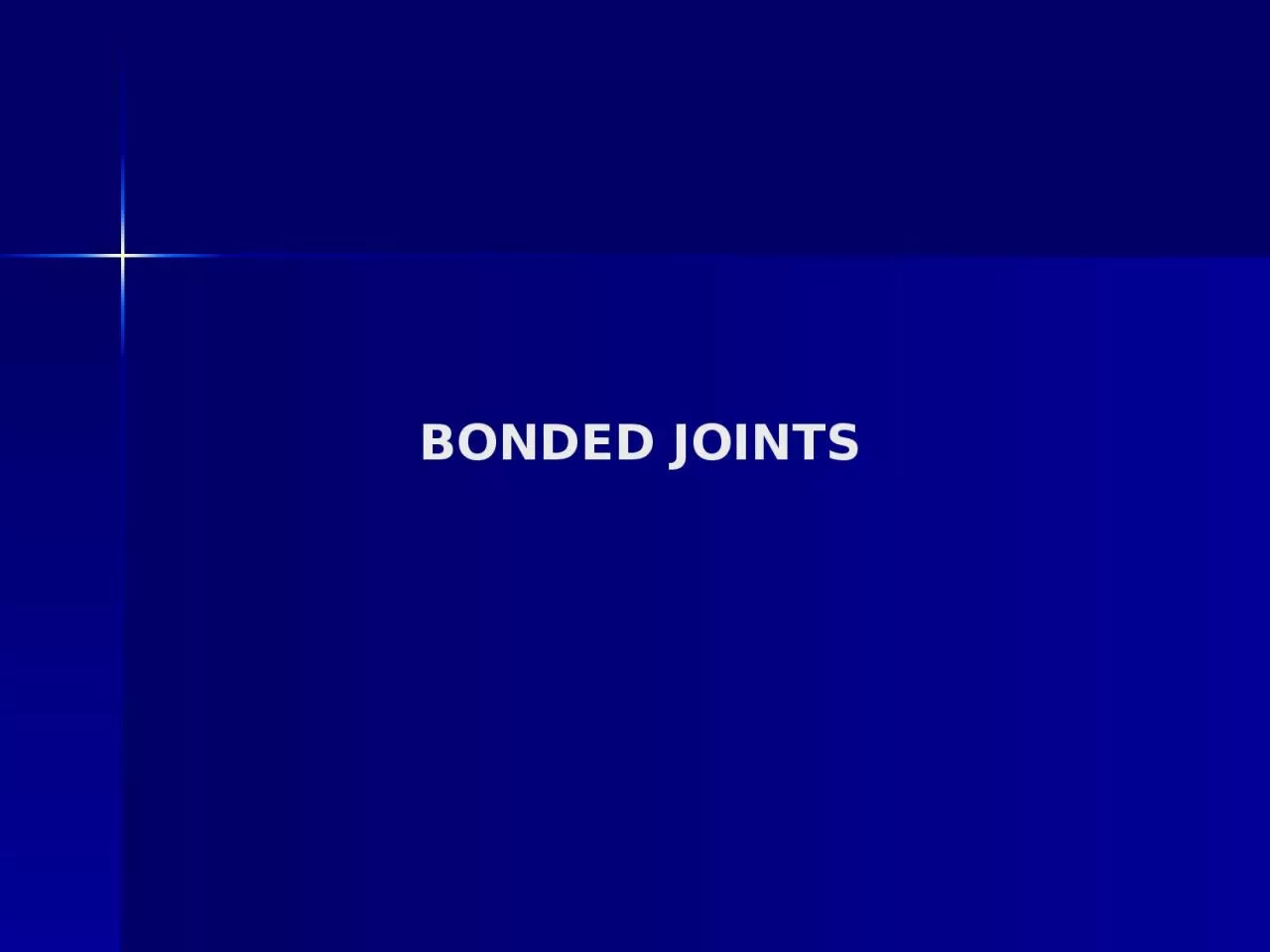

adhesion science see Loctite pgs 22 and 23 brainstorming exercise advantages of adhesive joints over mechanical joints advantages of mechanical joints over adhesive joints compare with list from ID: 1011371
Download Presentation The PPT/PDF document "BONDED JOINTS BONDED/MECHANICAL JOINT CO..." is the property of its rightful owner. Permission is granted to download and print the materials on this web site for personal, non-commercial use only, and to display it on your personal computer provided you do not modify the materials and that you retain all copyright notices contained in the materials. By downloading content from our website, you accept the terms of this agreement.
1. BONDED JOINTS
2. BONDED/MECHANICAL JOINT COMPARISONadhesion science - see Loctite, pgs 22 and 23brainstorming exerciseadvantages of adhesive joints over mechanical jointsadvantages of mechanical joints over adhesive jointscompare with list from Strong, pg 167
3. TAPE EXPERIMENT
4. TYPES OF JOINTSjoint designs – see Loctite, pg 150 and 151
5. JOINT SHOULD BE LOADED IN SHEAR NOT IN PEELshear stress distribution in adhesive (see Fig. 2, pg. 684, ASM Vol. 1)tapering edges will help eliminate stress risers under loading - reducing tendency to peel (especially in lap joints)influence of bonded lengths in flat lap joints (see Fig. 22.14, pg. 616, Lubin)performance of different joint types (see Figs. 22.9 and 22.10, pg. 614, Lubin)
6. CREEPcontinued strain at constant loaddependent onjoint configurationstress leveltype of adhesiveorientation of adherendsgeneralized characteristics of creep (old reference)brittle adhesives exhibit less creep than do ductile adhesivesa reduction of 30% in either stress or operating temperature level increases creep durability 500 times
7. FATIGUEsymmetrical bonded joints have higher fatigue endurance limits than unsymmetrical bonded jointsgeneralized characteristics of fatigue resistancean increased depth of lap creates increased fatigue lifeadhesive fatigue life decreases slightly with increased thickness of adherends
8. DESIGN OF BONDED JOINTadhesive selectionability to withstand required stressesability to withstand in-service environmental conditionspracticality of the application processmode of surface preparationrestriction on handling prepared surfaces before bondingmethod of mixing and applying adhesive to jointfixturing necessary for support of joint during bondingmethod of cleaning joint after bondingtypes of adhesive (see Table 1, pg. 684, ASM Vol. 1)analysis of joint to determine area of bond
9. BONDED JOINT PROCESSdry fit and/or imprintprepare surfacesapply adhesivemaintain thickness of bond (from Strong: 0.004 in. - 0.008 in., from Hercules: 0.005 in. - 0.015 in.)to maintain bondline thickness use bond wires, glass beads, or scrim clothplace in a locating/bonding fixturecompact to remove entrapped airclean upcure
10. PREPARATION OF COMPOSITE ADHERENDsurface must be free of grease and other contaminants (i.e. mold release agent)wipe with solvent or vapor degreasingrinse with water or alkaline solution (to remove solvents)abrade surface with sandpaper (or Scotchbrite)wipe again with solventrinse with water (dry in oven if rinsed with water)peel ply may be used to eliminate sandingwater break test to ensure proper surface preparation
11. PREPARATION OF METAL ADHERENDaluminum - phosphoric acid anodizing (PAA) followed by primertitanium - phosphate fluoride or some anodizing methodany metal which forms surface oxide should be carefully treated to achieve stable surface
12. BONDING OF THERMOPLASTICSmaterials can be welded (fusion bonded) rather than adhesively bondedwelding processconventional heating, ultrasonic heating, friction heating and induction heating (requires metal screen - susceptor)clean surfaces with solvent and/or water and detergentheat surfaces to point of incipient meltingpress surfaces together